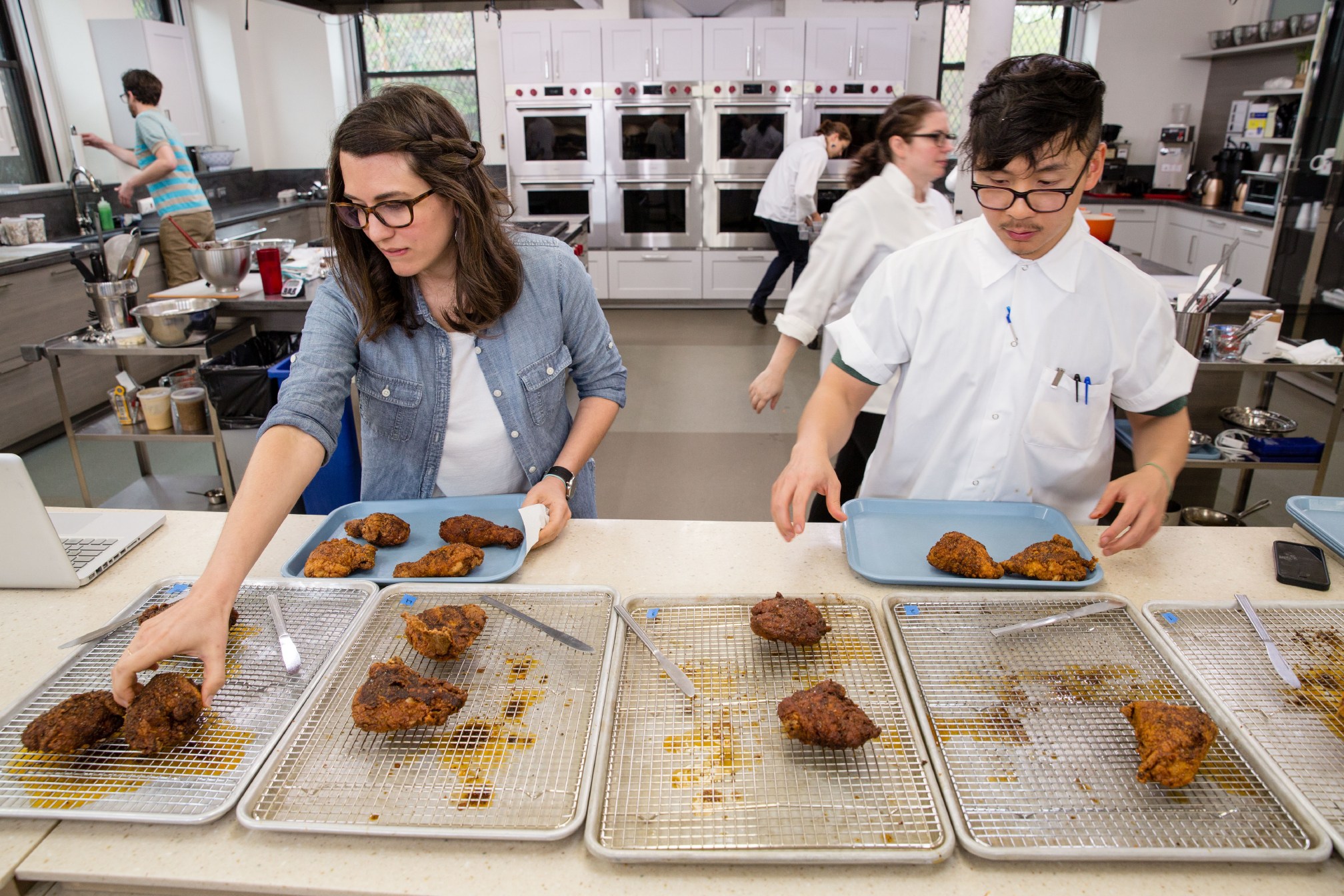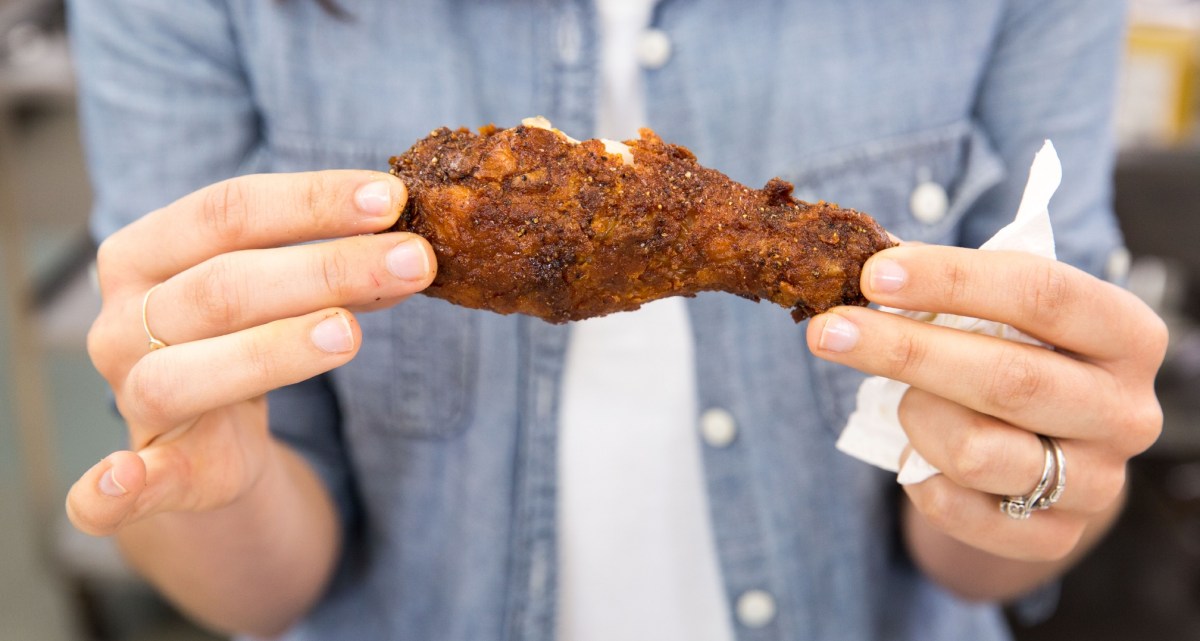In this weekly series, associate editor Tim Chin and test cook Sasha Marx take you behind the scenes of Cook’s Science and give you a glimpse into our recipe development process, from how we come up with recipe ideas, to test kitchen failures, to discoveries we make along the way. This week, Sasha digs into how one bite doesn’t necessarily give you the full picture of a dish.
Tasting is an essential part of the cooking process. As cooks we all must rely on our palates to determine whether a dish needs a pinch of salt, a few grinds of pepper, or a splash of lemon juice. “More salt, more acid” is a tried-and-true seasoning directive in restaurant kitchens, and it’s a big reason why restaurant food often tastes better than average home-cooking. Why? Think of salt and acid as the volume and brightness controls on a TV. Too little salt and flavors are muted. Too little acid and a dish is dull and flat. But that adage does have its limits. A heavy hand can easily take a dish from well-seasoned to unpleasantly salty or too acerbic and sharp. Like so much in life, it all comes down to balance.
“That one bite is perfectly seasoned, but what if you ate the whole thing?” I worked for a chef who would constantly ask cooks that question when tasting their food. See, restaurant cooks rarely have the chance to eat a full portion of the composed dishes they prepare. Instead, they constantly taste their mise en place one spoonful at a time throughout the course of the workday. On its own, one spoonful of a dish could taste spot-on, but when it’s accumulated with another dozen needed to finish the portion, it could be too salty, too sweet, or too sour. One of the reasons that tasting menus and tapas-sized shareable dishes are so popular with chefs is that smaller portions help avoid the onset of “palate fatigue,” that sensation of mouth boredom experienced on the 20th bite of never-ending fettuccine alfredo at a chain Italian restaurant that shall remain nameless. It’s an important distinction to make as a cook, and it takes time and practice to understand.
As Tim and I developed recipes to accompany our recent feature article on the science of spicy foods, Hurts So Good, one of our challenges was to properly calibrate the heat levels in our dishes. Every member of the team at Cook’s Science enjoys spicy food, so none of us shied away from tastings of Tim’s hot sauce, or a round of Spicy and Numbing Sichuan Bloody Marys. During team tastings, we typically have a few bites or sips of what’s on offer—we’re not pulling Don Draper mid-day office boozy benders, and we try to limit our fried chicken intake. During this round of spicy recipe development, both Tim and I had to keep in mind the cumulative burn factor. Just as one well-seasoned bite of food might add up to a salty dish, a number of spicy bites or sips could easily become overwhelming—and not necessarily obvious if you’re just having a bite or two during a tasting.

My first test batches of Sichuan peppercorn-infused vodka for one of my Bloody Mary recipes were aggressively numbing. We all agreed the drink was over the top with its buzzy kick. I decided to cut the amount of Sichuan peppercorns in half. At the first tasting of this toned-down Sichuan Bloody Mary, a couple of us wondered if we had gone too far in the other direction, making the drink too mild. In the context of just one or two sips, this Mary was pleasantly spicy, but didn’t pack the wallop of the first iteration. However, I reminded the team that over the course of drinking a whole cocktail, or two, the Sichuan pepper buzz would build. We wanted a brunch sipper with a slow burn, not one that blew the doors off after a couple sips. So I took one for the team, and at the end of one workday drank a whole Bloody Mary in a one-person happy hour. It was far more palatable than the first version, and, by the end of the glass, I concluded it was definitely still delivering the numbing tingle we were looking for. It was a delicious sacrifice.
Tim’s Nashville hot chicken-inspired Mole Hot Fried Chicken presented a similar topic of debate. If you’ve ever had Nashville-style hot chicken, you know the chile burn is real. Tim didn’t hold back on the heat, and the first few tastings had us all sweating and sneezing. And while the heat is a necessary part of this recipe, it also felt excessive. Getting through a full chicken thigh was a delicious but painful exercise and the cayenne heat overwhelmed any of the subtler chile and spice flavors Tim had so carefully balanced. Making fried chicken at home is an endeavor, and we agreed it would be a cruel joke to have people go through the trouble of brining, dredging, frying, and basting chicken with the chile oil, only to find that the fruit of their labor was too spicy to enjoy beyond the first few bites. Again, one bite might be bearable, but we needed to dial the heat back a bit so that people could enjoy eating a couple pieces of the richly flavorful chicken without needing to wash it down with a gallon of fire-extinguishing milk. Heat for heat’s sake is a zero-sum game in regards to flavor. By toning down the heat, and increasing the amount of aromatic spices in his mole-inspired chile oil, Tim was able to bring balance and nuanced flavor to brush over delicious fried chicken.
No matter what you’re cooking, think about how something will taste as a whole portion. If it’s a small appetizer, you may want to ratchet up the heat/salt/acid intensity to make those couple of bites stand out. But when it comes to a dish that will be enjoyed in larger portions, take a more holistic approach to seasoning to keep people coming back for more.
Photography by Kevin White and Steve Klise.




